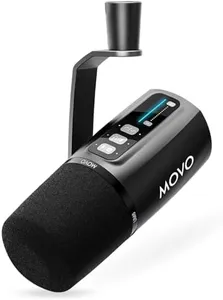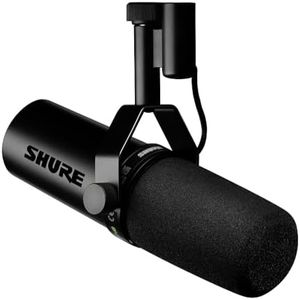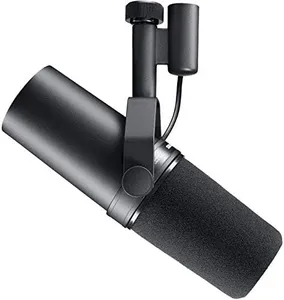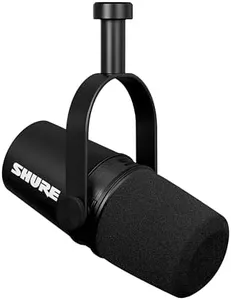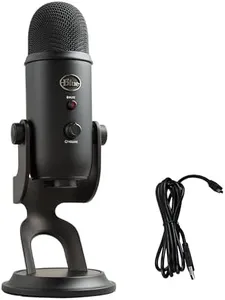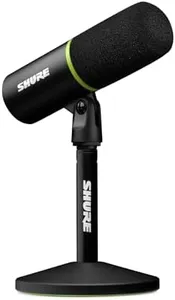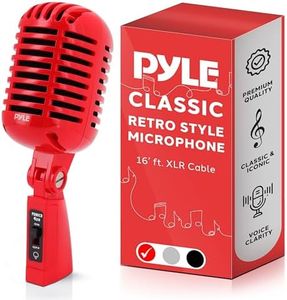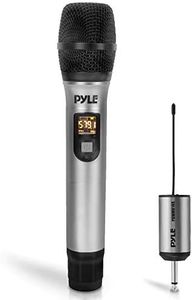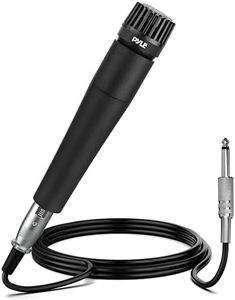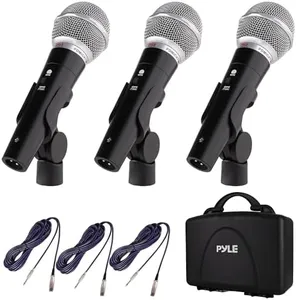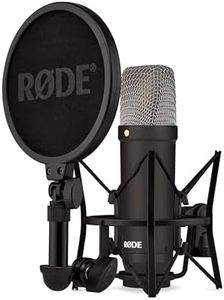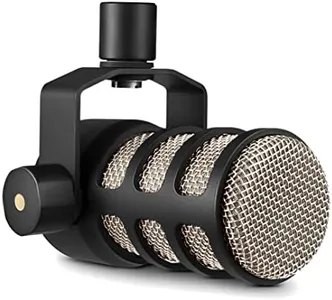10 Best Dictation Microphones 2025 in the United States
Our technology thoroughly searches through the online shopping world, reviewing hundreds of sites. We then process and analyze this information, updating in real-time to bring you the latest top-rated products. This way, you always get the best and most current options available.

Our Top Picks
Winner
Shure SM7dB Dynamic Vocal Microphone with Built-in Preamp – Studio Mic for Streaming, Podcasting, and Recording – Smooth Sound, Wide Frequency Range, Rugged Build, Windscreen Included, Black
Most important from
12544 reviews
The Shure SM7dB Dynamic Vocal Microphone is a solid choice for dictation, streaming, podcasting, and recording due to its built-in preamp and wide-range frequency response. It features a dynamic microphone type with a unidirectional (cardioid) polar pattern, which is excellent at isolating your voice from background noise. This makes it suitable for less-than-ideal recording environments. The frequency response of 50 to 20,000Hz ensures detailed and natural sound capture, catering well to both high and low tones.
The built-in preamp provides a clean, low-noise gain of up to 28 dB, making it versatile for various sound sources, whether loud or quiet. The preamp bypass switch is a handy feature, allowing users to opt for the original SM7B performance if preferred. Its XLR connectivity means it requires an interface or mixer offering +48V phantom power. This could be a limitation for those looking for more straightforward USB connectivity.
With a weight of 2.7 pounds and robust construction, it is durable but may not be the most portable option. The detachable windscreen adds to its practicality, reducing plosive sounds during recordings. In summary, the Shure SM7dB is a high-quality microphone that provides warm, clear sound and versatile usage options, though its lack of USB connectivity and heavier weight might not suit everyone’s needs.
Most important from
12544 reviews
Shure SM7B Vocal Dynamic Microphone – XLR Studio Mic for Podcasting, Recording, Broadcasting, Streaming & Gaming – Smooth, Warm Sound, Rugged Build, Detachable Windscreen, Wide Frequency Range, Black
Most important from
12544 reviews
The Shure SM7B microphone is a highly regarded option for those involved in vocals, podcasting, and streaming. Its dynamic design and unidirectional polar pattern are excellent for capturing clear sound while minimizing background noise—ideal for environments where focus on speech or vocals is crucial. The wide frequency response ensures that both music and speech are reproduced naturally, making it versatile for studio recording and live applications. Its robust construction adds to its durability, making it a favorite in professional settings.
The SM7B requires an XLR connection, which means you’ll need an audio interface or mixer for use, potentially making it less convenient for casual users or those looking for plug-and-play options. Additionally, while its noise-cancellation features are solid, it may still pick up some unwanted sound if not positioned correctly. Users will also need adequate pre-amp gain to achieve the best sound quality, as the SM7B is known to require at least 60dB of gain to get that warm tone it’s famous for.
Portability is decent, but at 2.7 pounds, it may not be as lightweight as some other microphones in the market, which could be a drawback for users looking for something easy to carry. The Shure SM7B excels for serious podcasters, musicians, and streamers seeking high-quality sound reproduction and solid construction but may require extra equipment and careful setup for optimal performance.
Most important from
12544 reviews
Shure MV7X XLR Dynamic Microphone – Voice-Isolating Cardioid Mic for Podcasting, Vocal Recording & Broadcasting, All-Metal, Black
Most important from
3908 reviews
The Shure MV7X Microphone is a dynamic mic designed for podcasting and vocal recording. It features an XLR-only connection, which is ideal for professional setups and ensures compatibility with a wide range of audio interfaces without needing an additional pre-amp. The unidirectional cardioid polar pattern, combined with voice isolation technology, effectively focuses on your voice and minimizes background noise, making it excellent for recording in less-than-perfect environments.
This microphone's robust all-metal construction ensures durability and its compatibility with standard mic stands adds to its versatility. The optimized frequency response is tailored to capture clear and detailed vocals, making it an appealing choice for podcasters and vocalists alike. It lacks USB connectivity, which might be a drawback for those who prefer a plug-and-play setup without requiring an audio interface.
While it is portable, the need for an external power source (cord) could be a limitation for mobile recording situations. The Shure MV7X's heritage and design draw from the legendary SM7B, offering professional-grade quality at a more accessible price point, making it suitable for budget-conscious users looking to maintain high audio standards.
Most important from
3908 reviews
Buying Guide for the Best Dictation Microphones
When choosing a dictation microphone, it's important to consider your specific needs and how you plan to use the device. Whether you're a professional needing high-quality recordings for transcription, a student recording lectures, or someone who needs to capture voice notes on the go, the right microphone can make a big difference in the clarity and accuracy of your recordings. Here are some key specifications to consider when selecting a dictation microphone.FAQ
Most Popular Categories Right Now
